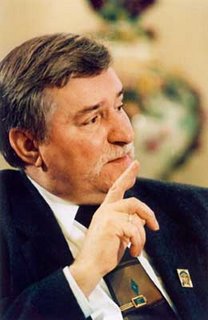 Nature as Mediator
Nature as MediatorF W Boreham recognized that one of the endearing features of nature was its ability to unify disparate parts of creation in ways that mediated peace. Beyond the steadying role of the stars in linking home with home and land with land, Boreham perceived that the night skies united the present age with other ages. Writing during the First World War, he said: “The stars unite us, at one and the same time, to the stateliest traditions of a splendid past, and to that new world which must arise, Phoenix-like, out of the lurid conflagration that we at present witness”.[1]
Celestial Links
These celestial monuments renewed hopeful memories and radiated life in a similar way to the terrestrial monuments that Boreham applauded as discussed in chapter six. In an editorial entitled, ‘The unities of the universe’, Boreham suggested that stars not only reminded but tangibly linked readers to the pioneers who endured similar struggles in early Australia. Upon his return to the pristine bush of Tasmania’s Wedge Bay, his reflection led him back further in time: “Here as it was in the beginning it is now and ever shall be world without end and it is restful to saturate oneself in the brooding silence of the primeval forest. I like to sit in this quiet cove where I picnicked two years ago and to reflect that it is today exactly as it was in the days of Caesar”.[2]
Brooding Silence
In 1901, the silence of the bush had become the context about which the Bulletin editor A G Stephens had coined the idea of “the Great Australian silence”[3]—an emerging myth that denoted colonial conquest, emptiness, unfamiliarity towards the new land and alienation from nature.[4] In contrast, imagining the perfection of Eden, Boreham was alluding to the capacity of nature’s ‘brooding silence’ to unite Australians with each other and to reconcile them with creation’s source.
Glittering Orbs
Not wanting to remain focused on some Arcadia, further consideration of the “ageless”[5] quality of the stars caused Boreham to project forward the minds of his Australian readers when saying, “Those glittering orbs unite us with the millions who will populate these Southern lands in the great days when all our dreams for Australia have splendidly come true”.[6] In a similar way to the role of history, Boreham emphasized nature’s gift of connecting people in the present age with all the ages. This linking could be achieved privately and individually but nature was also able to forge communal connections. The delight of witnessing the first swallow, thereby signaling the arrival of another summer, united Boreham with others who relished this experience. “The pleasure I get out of something shared,” he said, “I share it with all the world and all the ages”.[7]
Geoff Pound
Image: “the first swallow”
[1] Boreham, Mercury, 24 July 1915.
[2] F W Boreham, The golden milestone (London: The Epworth Press, 1915), 109.
[3] A G Stephens, ‘Voices from the basket’, Bulletin, 28 December 1901.
[4] Jane Belfrage, ‘The great Australian silence: Inside space, May 1994,
[5] Boreham, Mercury, 15 June 1940.
[6] Boreham, Mercury, 8 June 1935.
[7] Boreham, The golden milestone, 34.

 Now for something lighter:
Now for something lighter:

 Reverence for Life
Reverence for Life F W Boreham’s call to inclusivity through recognizing the value of children, the disabled, women and the racially oppressed was predominantly sounded through stories of audacious men and women who struggled against great odds and challenged the dehumanizing forces in society.
F W Boreham’s call to inclusivity through recognizing the value of children, the disabled, women and the racially oppressed was predominantly sounded through stories of audacious men and women who struggled against great odds and challenged the dehumanizing forces in society. F W Boreham’s conviction that books, art and theatre are the major avenues through which people might connect with the richness of life resonates with J R R Tolkien’ assertion that fairy-stories (and other imaginative literature) satisfy “certain primordial human desires” including the desire to “survey the depths of space and time” and the desire “to hold communion with other living things”.
F W Boreham’s conviction that books, art and theatre are the major avenues through which people might connect with the richness of life resonates with J R R Tolkien’ assertion that fairy-stories (and other imaginative literature) satisfy “certain primordial human desires” including the desire to “survey the depths of space and time” and the desire “to hold communion with other living things”.